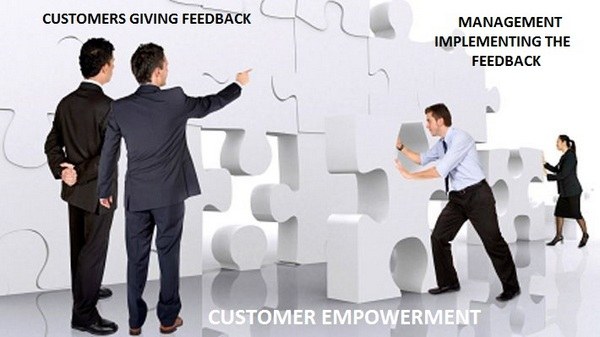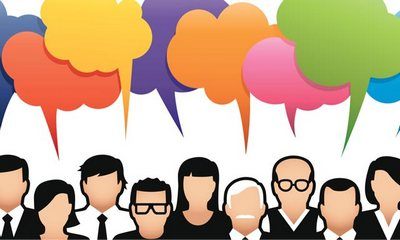Most customers have an opinion of how a product should be or how a company should work. In the past decades, no one listened to the customer because the market was open and it was a production or sales concept. As long as you were reaching the customer, and showcasing the product, the customer was happy.
But the era changed and more and more information began spreading and being exchanged between people. Before they went to the market, consumers knew which brand was really good and which was bad. They knew this through their friends, through television or through internet. Ultimately, companies started listening to customers so that they could give a better consumer experience. And hence began the saga of customer empowerment.

The best example of customer empowerment are reality shows. There was a time when television was just a one way communication. Nowadays, reality show winners are decided by the viewers. viewers can send messages or email to select the winner of their choice. The more the votes, the more chances of a player winning the reality show.
There are brands like Samsung, Nike and HUL who are investing a lot in consumer research, just to find out what the consumer wants and what is the next product that they should launch. Gone are the days when companies used to manufacture and then present the product to the customer. Nowadays, customers are empowered to make decisions for the company.
Another trend which has caught on with customer empowerment is employee empowerment. Most customers need a quick answer, and if the employee in front of the customer does not have the power of decision making, the customer is sure to get frustrated. At such a time, empowering the employee ultimately leads to customer empowerment because the company did what the customer wanted – that’s the ultimate experience for the customer.
Customer empowerment does not exist only in B2C companies. It exists in a vast scale in B2B companies also. Engineering companies involve their business customers in the decisions that they take. This is because most of these companies are bulk manufacturers of products, and these products are supplied only to a handful of companies. Thus, any changes in the production or design needs to be communicated to business customers, who can either decide to go ahead with the new product or they can veto the new design.
The power belongs to the customers.
This shift in power caused changes of management methods. Instead of having a top down approach of marketing, wherein the management made the decisions and the customer listened, nowadays marketers follow a bottom up approach of marketing. The feedback comes from customers regularly, and then the implementation is done.
Here is a video by Marketing91 on Customer Empowerment.
Examples of customer empowerment
- Sites like Ebay, quickr or any other classified sites which allow consumers to sell directly to other consumers.
- In E-commerce, the products which have positive customer reviews are given much more importance than those which have negative or even neutral reviews. On the other hand, if a customer wants to return any product for whatever reasons, then it is returned without asking questions from the brand. Thereby giving complete purchasing power and independence in the hand of the customers.
- Job sites have plans for job seekers to send their CV’s directly to brands instead of waiting for the brands to contact the job seeker.
- Companies are conducting polls on websites to get to know what features do customers want. These features are then incorporated in new product variants.
- Even government sites have forums nowadays to listen to people and make decisions accordingly. Just look at the Facebook campaign of Freeinternet.org which was collectively rebuked by many people (at least in India).
- Brands are now keeping contests to know what type of ads the customer would like to see. Sites like indiblogger and blogadda build brands very fast by asking bloggers to participate in the marketing.
- Brands are now found on all major social media groups and they are answering queries, nudging competition, and involving people by asking questions on social media so that the customer is involved in the decision making with the company. Doesn’t that place power in the hands of the customer.
There are many ways that you can empower your customers and the most crucial one is to listen to them, and then implement the plans to your best of abilities.
If i want to hit closer to home, then this blog cannot run without a contact me icon. Because i want my readers to have the power to contact me and change things at Marketing91, the way they like it. If i don’t listen to them, ignore their queries or don’t answer in comments, then they have the power to move to a competitors blog.
This power comes from the sheer importance of customers for any business. Simultaneously, there are mediums nowadays which can spread dissatisfaction for a brand easily and quickly between customers. Hence the need of customer empowerment and customer involvement is rising steadily.
Liked this post? Check out the complete series on Customer Management

